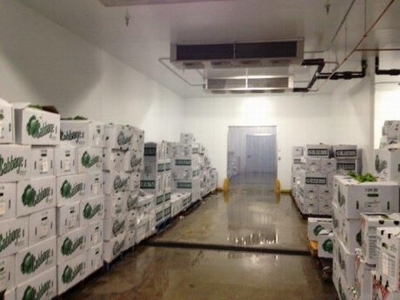
By 2005, Eastern Carolina Organics (ECO) was up and running as a partially farmer-owned “food hub,” working with dozens of organic farms and making local food accessible to more people throughout the region. The food hub markets and distributes food from nearly 20 farms across the Carolinas and Virginia to various retailers, including restaurants and food clubs. The company also helps farmers who want to transition from conventional growing practices to organic farming.
The majority of ECO’s profits—which are “in the millions” annually, according to CEO Sandi Kronick—end up in the pockets of these small farmers.
“Eighty percent of everything we’ve ever made is sent by check—literally through the United States Postal Service—to farmers that we work with,” she tells TakePart. “So it’s a really great feeling knowing that most of our earnings are going directly to family farms in North Carolina and Virginia.”
The food hub distributes organic produce to big retailers like Whole Foods, but also food cooperatives, natural food stores, restaurants and conventional supermarkets. That broad reach is partially due to the company’s “aha!” moment, Kronick says, which came in 2008 when ECO refocused on becoming a better trucking company. Experts say the kind of logistical focus ECO has developed is vital for the survival of other food hubs.
“Food Hubs provide an avenue to make more local food available in higher volumes to a variety of markets, including schools, hospitals, restaurants, and other institutions,” says Rich Pirog, Senior Associate Director at the Michigan State University Center for Regional Food Systems. “Many hubs face challenges in being able to match supply with demand, finding adequate financing, and remaining competitive in reaching price points for targeted markets.”
Still, the model has garnered the attention of officials at the nation’s top agriculture agency, which is—in word, if not in deed—placing more attention in recent years on local food systems. Officials from the United States Department of Agriculture visited ECO last week for a roundtable discussion about federal support of local food systems, among other issues. And in late May, Agriculture Secretary Tom Vilsack toured a similar company, Blue Ridge Produce in Elkwood, Va., after which he touted the country’s estimated 220 food hubs not only as important for local food consumption—but as regional economic drivers.
“By serving as a link between the farm or ranch and regional buyers, food hubs keep more of the retail food dollar circulating in the local economy,” he said. “In effect, the success of regional food hubs comes from entrepreneurship, sound business sense and a desire for social impact.”





